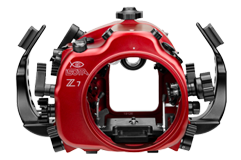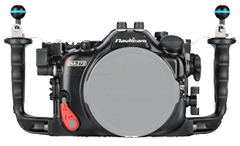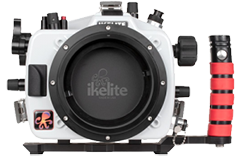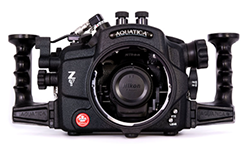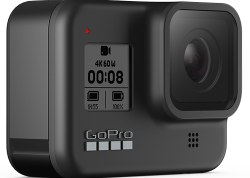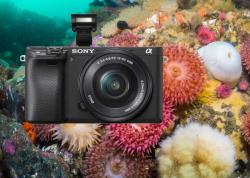Nikon Z7II & Z6II Review
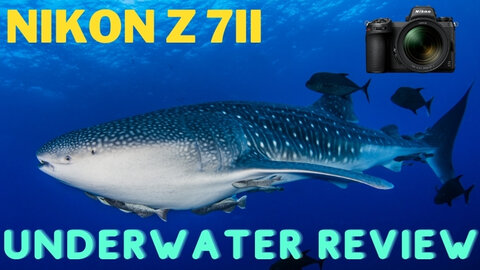
When Nikon first announced the original Nikon Z7 and Z6, their first set of full-frame mirrorless cameras, many continued to shoot with their beloved DSLR cameras like the Nikon D850 and D500. Nikon's DSLRs still remained supreme in their autofocus performance, dual card slots, and battery life. Yet for underwater photographers and videographers, mirrorless cameras offer a number of advantages over DSLRs, and the Z6/Z7 became a very popular set of cameras at the Underwater Photography Guide. So will the new Nikon Z7II and Nikon Z6II be enough to convince the Nikon DSLR camp to finally make the switch to mirrorless cameras? We think yes. With updates to the Z7 and Z6's autofocus system, video recording options, battery life, card slots, and buffer size, Nikon addressed many of the complaints directed at the original flagship models. However, these updates have not been enough to warrant an upgrade from the original models unless you are an avid video shooter.
Nikon Z7II vs Z 6II
The Nikon Z7II and Z6II are essentially the same camera with the major difference being resolution - the Nikon Z7II can capture 45.7 megapixel photos whereas the Nikon Z6II can capture 24.5 megapixel photos. So the Z7II is geared towards the higher-end, professional market, and the Nikon Z6II is an excellent all-around "prosumer" camera. And in some ways, the Nikon Z 6II has its advantages with less noise at higher ISOs and slightly better video quality unless you intend to shoot 4K@60p. For this review, we had the amazing opportunity to dive with the Nikon Z 7II exclusively during our photoworkshop in Socorro, Mexico - one of the best places in the world to photograph oceanic megafauna. The author of this review, and editor-in-chief of the Underwater Photography Guide, Nirupam Nigam, personally owns the Nikon Z6 as his primary system and couldn't pass up the opportunity to dive with the Z7II. We will cover everything from updates to the Z7II/Z6II to why we think this camera is perfect for underwater Nikon shooters, but not necessarily for brand-agnostic creatives. Let's get started!
Editor's Note: Throughout this review, you may notice many alternate spellings of "Z6 II and Z 7II." It seems that no one knows where the "space" goes....not even Nikon according to their webpages. So we thought we'd make everyone happy and spell it every way possible!
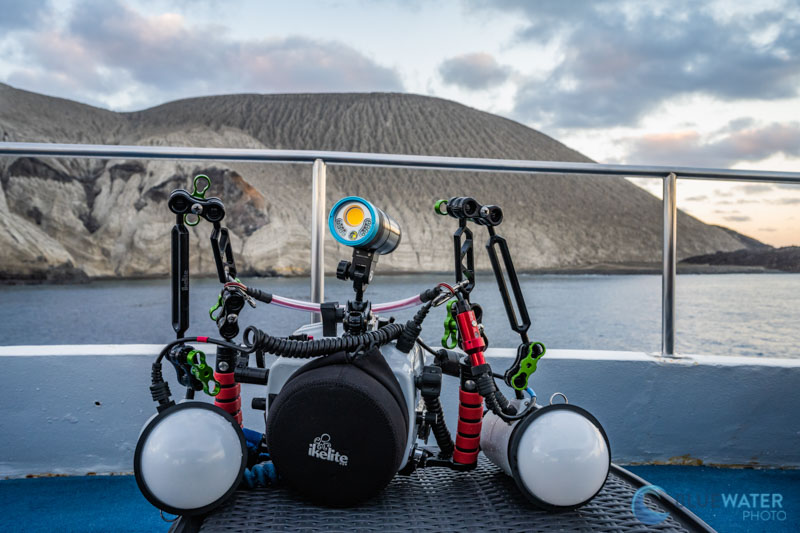
Nikon Z7II in the Field
Camera Body Status: Shipping Now
Underwater Housing Status: Shipping Now!
Contact us at sales@bluewaterphotostore.com to order a housing and for updates on housing releases.
U.S. MSRP Nikon Z 7II: $2,996.95
U.S. MSRP Nikon Z 6II: $1,996.95
Jump to Section
Nikon Z7 vs Z7 II vs Z6 vs Z6 II | Specifications | Key Features
Nikon Z7II/Z6II for Underwater Photo and Video | Who Should Buy? | Underwater Lenses
Underwater Housings | Conclusions
Purchase a Nikon Z7II/Z6II underwater housing at Bluewater Photo:
Nauticam Nikon Z7II, Z6II Underwater Housing
Ikelite Nikon Z 7II, Z 6II, Z7, Z6 Underwater Housing
Sea & Sea Nikon Z7II, Z6II Underwater Housing
Aquatica Nikon Z7II, Z6II Underwater Housing
Isotta Nikon Z7II, Z6II, Z7, Z6 Underwater Housing
Marelux Nikon Z7 II & Z6 II Underwater Housing
Need help choosing a housing? Check out the Nikon Z7II and Z6II Underwater Housing Buyer's Guide
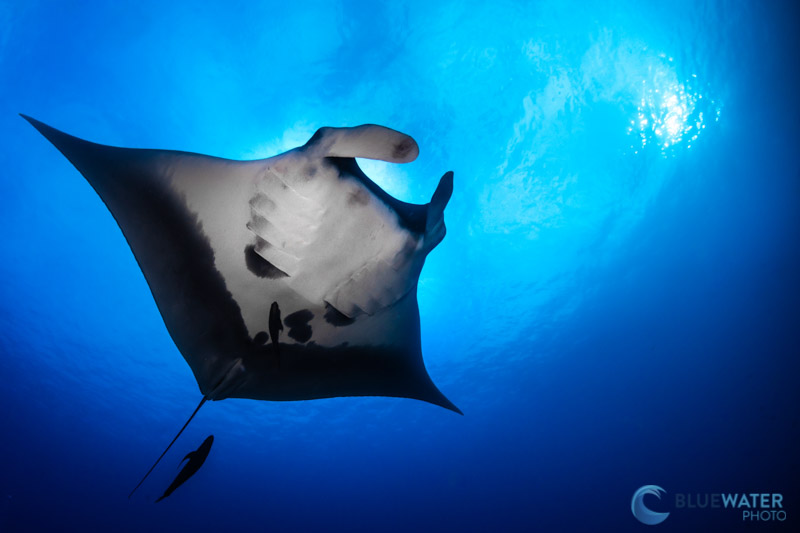
Manta photographed with the Nikon Z 7II in Socorro Mexico. f/13, 1/200, ISO 400
Nikon Z7 vs Z7 II vs Z6 vs Z6 II
Underwater Housings and Body Size
As we mentioned, the Nikon Z7, Z7II, Z6, and Z6II all share almost identical bodies. So much so that some housing brands, like Ikelite and Isotta, offer housings that fit all four camera models. The body size between the first and second models is a couple of mm, so other housing manufacturers offer separate models that can fit either the Z6 and Z7 or the Z6II and Z7II. If you already have the original Z6 or Z7 and intend to upgrade your camera, please contact us to see if you need a slight modification to your original housing.
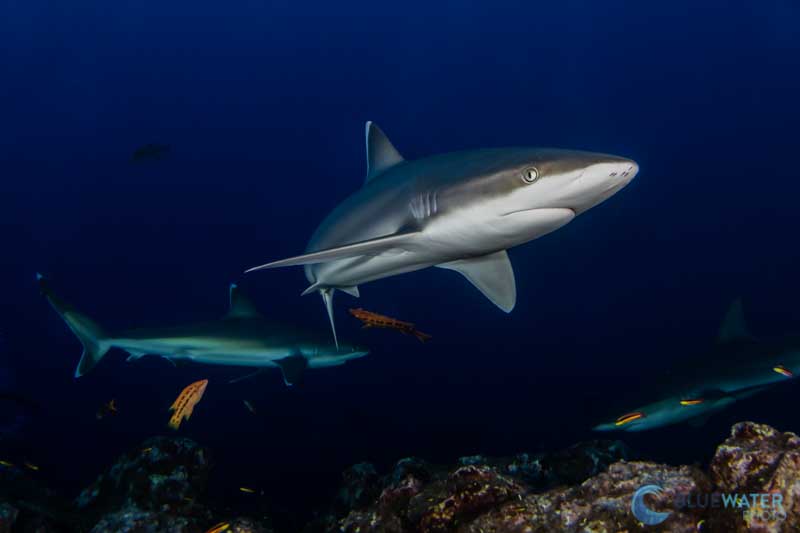
A photo of fast moving reef sharks would not have been possible without a highly functioning autofocus system with autofocus tracking. 1/160, ISO 640, f/13
Autofocus Systems
On paper, the original Z7/Z6 has a slower autofocus system than the Z7II/Z6II and performs worse in low light. With dual Expeed 6 processors instead of a single processor, the newer models have more processing power which is useful for continuous autofocusing. However, we found during our underwater review that the autofocus speed, accuracy, and low light ability were about the same between all four models after accounting for firmware updates on the original Z6/Z7. We were disappointed to not see a larger improvement. But the moral of the story is to always update your camera's firmware!
The Z6/Z6II has 273 phase detect AF points and the Nikon Z7/Z7II has 493 phase detect autofocus points. Either way, all four cameras have autofocus points covering 90% of the sensor. If you do a lot of still macro work, we recommend the Nikon Z7/Z7II for greater focus point accuracy as each focus point is smaller.
Video Improvements
The most exciting updates to the Nikon mirrorless line have been the updates to video. You can now shoot 4K @ 60p with both the Nikon Z 7II and Z6II! With 60 frames per second recording, you'll be able to stabilize your underwater footage by slowing it down in post production. It's a significant advantage to underwater video shooters who constantly deal with high motion shooting environments. Combined with excellent 5-axis in-body image-stabilization, video shooters should be able to take handheld video in many more shooting situations than they could have done with older Nikon models. The 4K @ 60p video resolution does have its disadvantages, however. The Z7 II takes line skipped video at 4K/60p which results in slightly softer video. The Z6II crops to DX mode when shooting at 4K/60p which means you won't be able to take advantage of the full field of view of your lenses. It will also be slightly softer than 4K/30p video oversampled with the full width of the sensor. We shot most of our video at 4K/60p and didn't find a major difference in video quality. When your lens is behind a port, there is going to be a reduced sharpness anyway.
The Nikon Z7II and Z6II are officially the two best Nikon cameras for underwater video, but they don't measure up quite as high as the Canon EOS R5, R6, or Sony A7S III. Both cameras still lack the option to record 10-bit 4:2:2 and Log video internally - seriously hindering people that want to color grade but don't want to buy an external recorder. If you are willing to put up the money (and additional housing) for a recorder, you will have the ability to unlock Prores RAW and Blackmagic RAW recording at 10-bit 4:2:2. It's also important to note that you will need to send your camera to Nikon to unlock the feature for $199.95.
Card Slots and Battery Life
On paper, the new Nikon EN-EL15c battery provides a modest 10% increase in battery life from 330 to 360 shots. In the field, the difference we saw in battery life from the original Z7 was enough to make me consider upgrading. The reason for this is that the Nikon Z7II went from being able to do three dives comfortably on one battery to four. That's the difference between changing the battery once between dives on a liveaboard to not having to change the battery all day!
Having dual card slots are also a nice improvement from the single XQD slot on the original Z6/Z7. Though XQD cards are much hard to corrupt than SD cards, it can be nice to have redundancy. The Z7II and Z6II have a second UHS-II slot.
Image Quality
I was disappointed to see that there were no changes to the sensor from the Nikon Z7/Z6 to the Nikon Z7II/Z6II. The image quality is essentially the same. And while all four cameras have excellent image quality, the sensor on the Nikon Z7II has room for improvement. I did notice a little banding during our underwater tests when I tried to recover significantly underexposed images. But most importantly, the low light performance on the Z7II has room to be improved. Like all high resolution sensors, the Z7II does suffer from an increased amount of noise at higher ISOs. Though the grain is quite fine and can be easily removed in post processing, we have found that the sensor on the Canon EOS R5 performs better in low light with less noise overall.
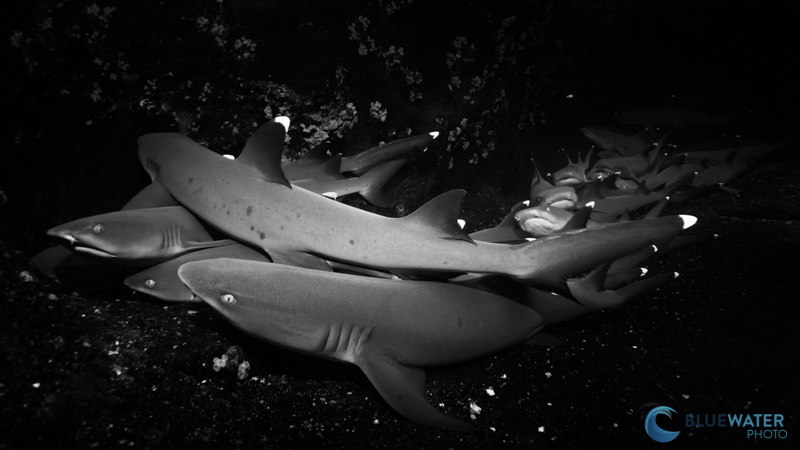
Whitetip reefsharks pile up at Roca Partida, Mexico. Photographed with a Nikon Z7II camera in an Ikelite Z7II housing with the Nikon 8-15mm fisheye lens. 1/60, ISO 400, f/14
Nikon Z7 II Specifications
- 45.7 megapixel full-frame BSI CMOS sensor (no lowpass filter)
- ISO 64 - 25,600
- 5 axis in-body image-stabilization (IBIS)
- dual Expeed 6 processors
- 3.6 million dot EVF
- 1/200s flash sync speed
- Dual XQD and UHS-II (SD) card slots
- 10 fps burst shooting
- 77 image buffer @ 12-bit lossless RAW files
- 493 point phase detect hybrid autofocus system
- -3 EV low light AF sensitivity
- 4K video recording up to 60 fps
- 10 bit 4:2:2 recording with N-Log over HDMI output
- 360 shot battery life
- Weight: 615 grams
- Size: 5.3 X 4 X 2.8 inches
Nikon Z6 II Specifications
- 24.5 megapixel full-frame BSI CMOS sensor (w/ lowpass filter)
- ISO 64 - 51,200
- 5 axis in-body image-stabilization (IBIS)
- dual Expeed 6 processors
- 3.6 million dot EVF
- 1/200s flash sync speed
- Dual XQD and UHS-II (SD) card slots
- 14 fps burst shooting
- 124 shot image buffer @ 12-bit lossless RAW files
- 273 point phase detect hybrid autofocus system
- -4.5 EV low light AF sensitivity
- 4K video recording up to 60 fps (cropped in DX mode)
- 10 bit 4:2:2 recording with N-Log over HDMI output
- 340 shot battery life
- Weight: 615 grams
- Size: 5.3 X 4 X 2.8 inches
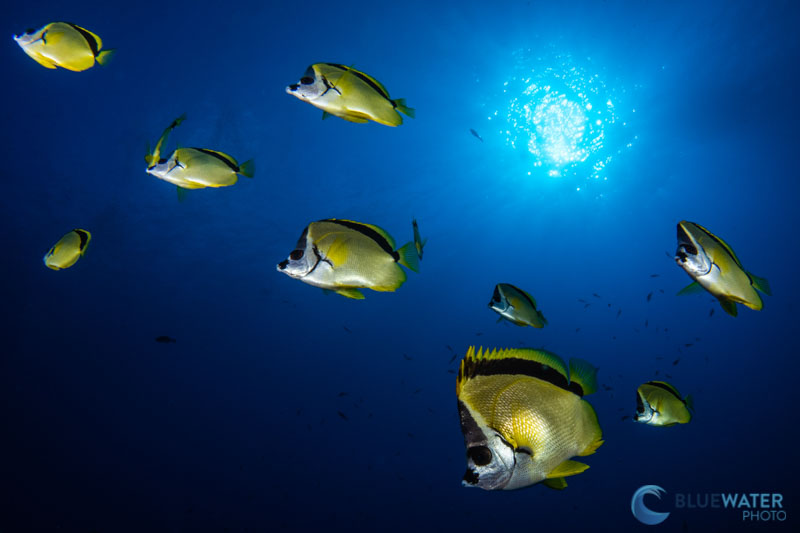
Excellent dynamic range performance from the Nikon Z7II 45.7 MP sensor
Nikon Z7 II and Z6 II Key Features
Body, Build, and Battery Life
As with all Nikon cameras, the body design and ergonomics on the Nikon Z7II and Z6II are excellent. The camera is almost identical to the original Z6 and Z7 sans a couple of mm of body depth. The body is solid and the weatherproofing can help save your camera from minor contact with water. At one point, some seawater did get on our camera body and after a quick wipe down, it was fine. The Z7II and Z6II are significantly smaller than a Nikon DSLR at about 60% of the weight of a Nikon D850. However, Nikon F mount and Z mount lenses are still full frame lenses, so you may not see too much of a difference in the overall size of your underwater camera rig. That being said, it is still much easier to travel with the Nikon Z7II than the D850.
The ergonomics on the Z7II are very easy to navigate - especially for Nikon shooters. There have been a couple of small additions to the menu since the original Z7, but otherwise the controls are identical. Our favorite thing about the Nikon mirrorless bodies is that they have a switch around the display button that allows you to toggle between photo and video modes. It's very useful to quickly switch between photo and video underwater, and makes a world of difference if you are a hybrid shooter. This control is better than switching modes on every other camera model we have tested so far. The "i" menu on the camera is customizable so that you can add your favorite settings to be just a button press away. It was very useful to use the "i" menu when quickly changing ISOs or setting manual white balance. This being said, the Canon EOS R5 and Sony A7R IV have much more customization options than the Nikon Z7II and we hope the next Nikon body will have more options for customizing buttons as well. Finally, the camera has an EVF switch button on the EVF that allows you to toggle between the EVF and monitor. It's very useful while shooting underwater because you can decide whether to shoot with the viewfinder or LCD without digging into the menu system.
With the battery life extended in the new Nikon EN-EL15C battery, we finally felt like there was consistently enough battery to last a whole dive day of hybrid photo and video shooting without changing it (i.e. four dives). This is a significant improvement on the Z7II and Z6II for photographers who want to shoot with a lens that may need to be removed prior to removing the camera body from the housing. It allows you to shoot throughout the day without needing to touch the camera. Another nice feature that was added to the Nikon Z7II and Z6II is that you can now charge your battery while keeping it in the camera via USB-C cable. The camera comes with a convenient fast charger that uses the USB-C port.
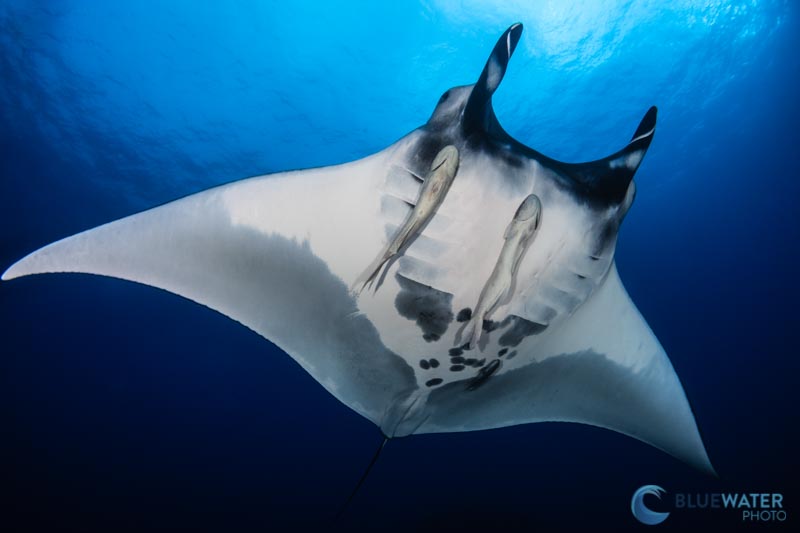
A friendly manta ray photographed with the Nikon Z7II in an Ikelite housing. The nice exposure on the belly could not have been possible with the Ikelite to Nikon TTL converter and the Ikelite DS 161 strobes. f/13, 1/160, ISO 500
Image Quality and Resolution Test
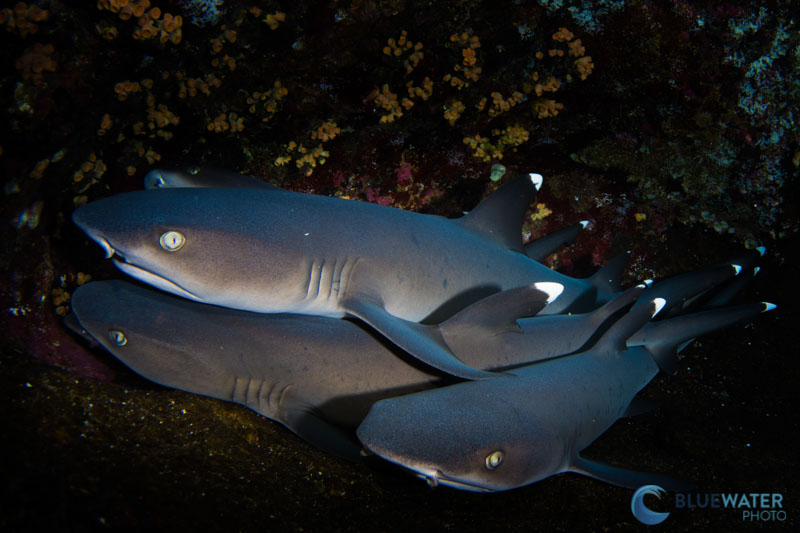
This image shows how details from shadows can be nicely recovered. Photographed with the Nikon Z7II, Nikon 8-15mm fisheye lens, and Ikelite Nikon Z7II housing. f/14, 1/100, ISO 400
The image quality from both the Nikon Z7II and Z6II is top-of-the-line and is no different than that of the original Z7/Z6. The sensor has not been updated at all from the original launch. A 45.7 megapixel sensor on the Z7II is an extremely high resolution for a full-frame camera. It's a great option for macro photographers and those who are looking to do significant crops of their photos. We also found it useful for shooting large pelagic animals in blue water as we were able to crop into portraits of animals that normally would not get close - like this triggerfish below.
Original Photo
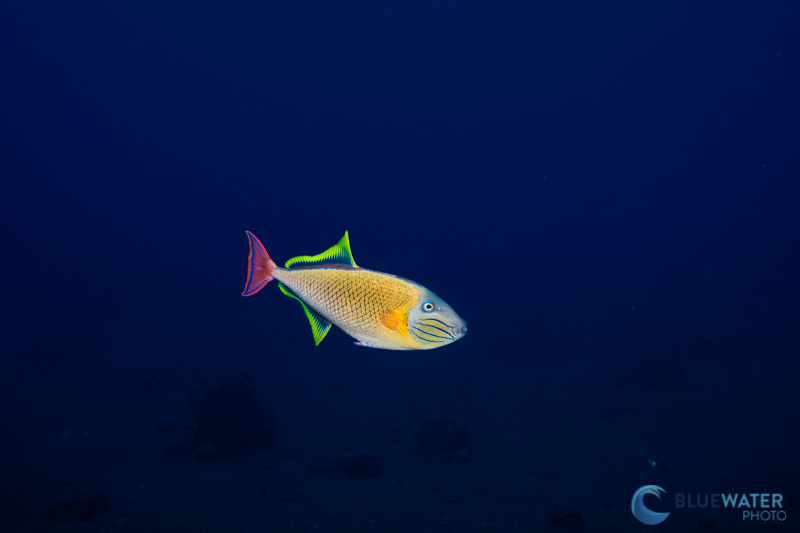
This triggerfish was too shy to get any closer to our Nikon Z7II and Nikon Z mount 14-30 wide angle lens.
100% crop
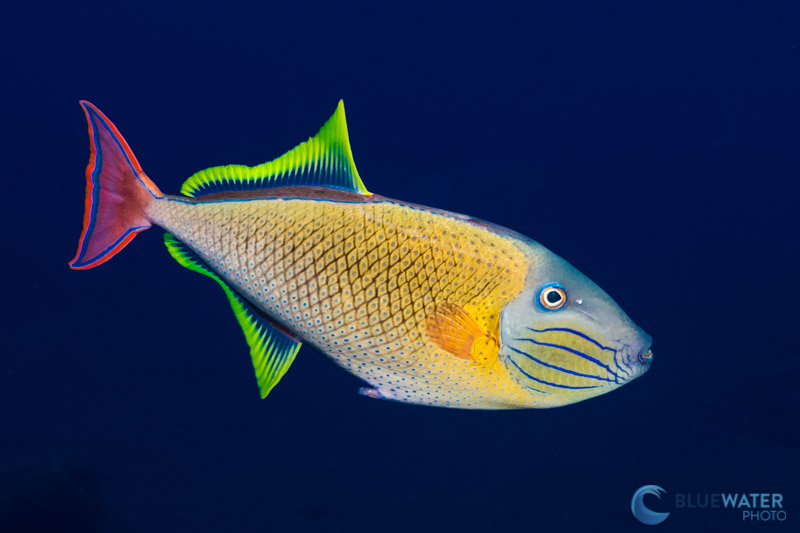
The incredible 45.7MP full-frame sensor on the Nikon Z7II allowed us to capture a beautiful portrait of the triggerfish with an extreme crop. f/13, 1/160, ISO 500
However, like all high resolution cameras, the Z7II does introduce more noise at higher ISOs. We found it to be difficult to take photos without noise (and still maintain a blue background) on days without sun when we were diving below 100ft deep. Although the noise from the Z7II is fine grained and can be easily removed in post processing, this is a consideration that wide angle photographers should make. If you don't need to crop your photos much and want to recover a lot of detail from shadowy reefscapes, the Nikon Z6II might be a better option. A lower resolution sensor can also mean smaller file sizes for an easier workflow. However, if you intend on producing large prints, the Nikon Z7II will produce some of the best quality prints on the market.
In-Body Image-Stabilization
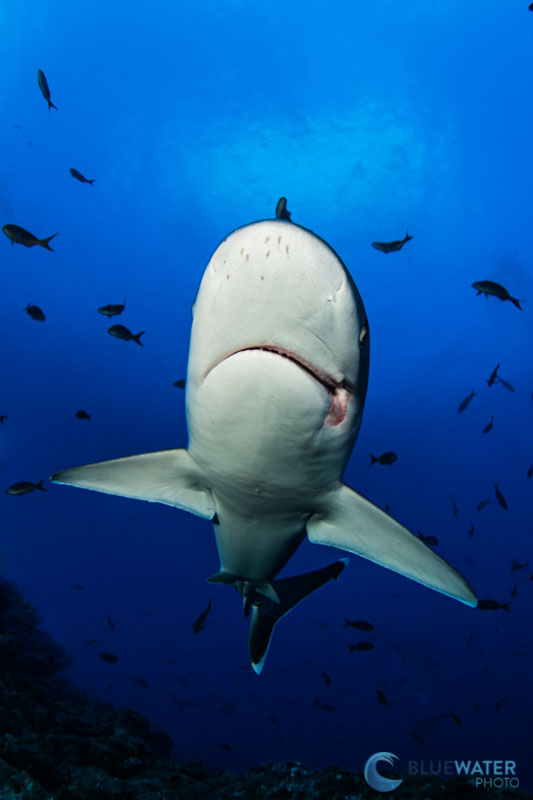
IBIS may not help subject motion blur, but it certainly helps reduced blur from hand-shake. f/13, 1/125, ISO 500
In-Body Image-Stabilization, or IBIS, is a system that moves a sensor to counteract camera shake. It allows you to shoot at slower shutter speeds than you normally would be able to without motion blur and take more stable video. The 5 axis IBIS system on the Z7II and Z6II is second only to the Canon EOS R5 and R6. We think it does a better job of stabilization than Sony cameras like the Sony A7R IV and Sony A7S III. This is an important consideration for underwater photo and video shooters as underwater environments tend to be the most difficult when it comes to reducing motion blur and camera shake.
Autofocus System
The autofocus system on the Nikon Z7II and Z6II are functionally identical between the two cameras other than the size of the autofocus points. If you are a macro shooter that needs accuracy with still subjects, the Z7II is a slightly better option when compared to the Z6II. When it comes to autofocus speed, both cameras are very quick with autofocus acquisition, but not competitive in the wider camera market. The most recent full frame mirrorless cameras from Sony and Canon offer autofocus systems with quicker and more accurate autofocus in continuous tracking modes. However, it's important not to be too quick to discredit the Nikon Z7II and Z6II for this reason. The autofocus tracking system on both cameras is usable, if a little clunky. To use tracking, you need to press the "ok" button twice which can make it hard to lock focus on a subject quickly. Once locked on, the autofocus system can keep up with moving subjects, but not as accurately as Sony or Canon's system. When using AF tracking, we found it missed on average about 20-30% of our shots in Socorro - which is one of the most difficult continuous shooting environments we could put it through. When using the single autofocus mode, focus acquisition is generally very quick and accurate - though it does struggle slightly in very low light. If you plan on shooting in very quick action environments or with quick macro subjects, we recommend taking a look at the Sony A7R IV and Canon EOS R5/R6 as these three cameras have some of the best autofocus systems on the market.
Now that we have said this, I would like to take a step back and reiterate that the autofocus system on the Z6II and Z7II is still good enough for most professional use cases. It is certainly a better autofocus system than any smaller sensor camera on the market. Nikon's lenses also perform quite quickly underwater which is another consideration to make.
One final note about autofocus - the animal eye autofocus system generally does not work on fish. However, it was curiously successful with a group of butterflyfish that I was photographing at a cleaning station.
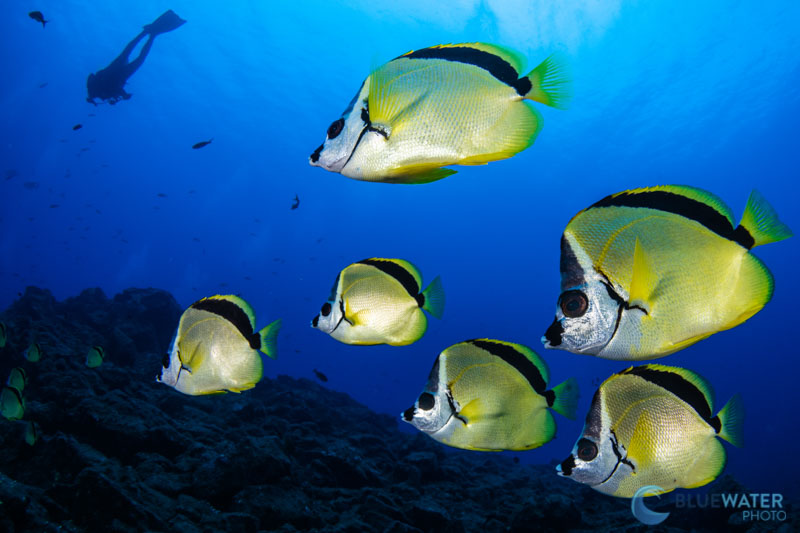
This school of butterflyfish successfully triggered the animal eye AF system in the Nikon Z7II. Photographed with the Nikon Z7II in an Ikelite Z7II housing with the Nikon 8-15mm fisheye lens and dual Ikelite DS 161 strobes. f/13, 1/200, ISO 500
Nikon Z7II and Z6 II for Underwater Photography
For underwater photography, the Nikon Z6II and Nikon Z7II are Nikon's best cameras. They have all the same benefits of a mirrorless camera including a high resolution EVF for settings and image review, IBIS for stable and crisp content, edge-to-edge autofocus points for creative composition, quick burst shooting speeds, and silent shutters (topside benefit). With a high resolution and low resolution full-frame option, photographers can choose which camera body they prefer for their needs. We think the Nikon Z7II is the clear choice for macro photographers, and the Nikon Z6II could be a better choice for wide angle, low visibility, and budget minded underwater photographers. The beautiful image quality and excellent IBIS system are two particular positives from these cameras. In fact, the IBIS system saved us a few times while chasing after quick moving subjects like whale sharks. Although I was swimming as fast I could, I decided to shoot this photo as low as 1/125s and the IBIS system saved me from certain camera shake.
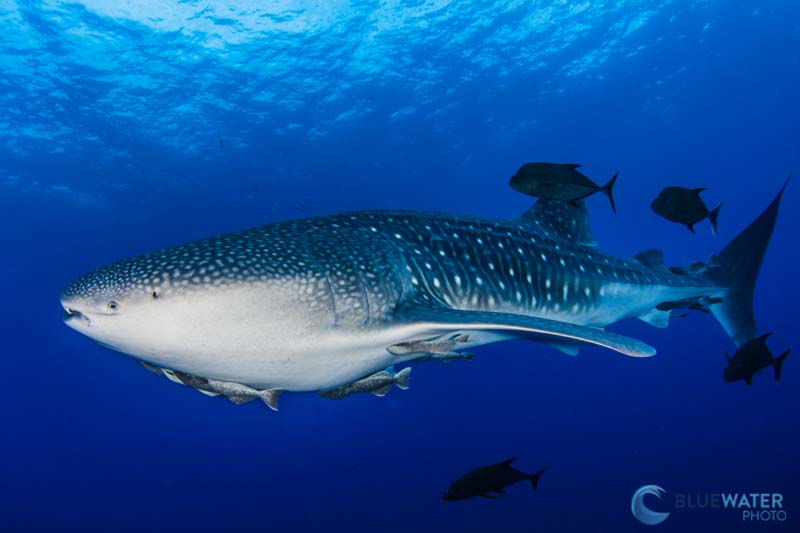
Whale shark photographed with the Nikon Z7II and the Nikon 8-15mm wide angle lens. 1/125, f/13, ISO 640
The autofocus system for underwater photography is good overall but has not truly been updated since 2019. We found that it was nearly identical to the autofocus system found in the original Nikon Z7 and Z6 after those cameras were given a firmware-based autofocus update. We think the autofocus is lagging behind Canon and Sony mirrorless offerings - to the point where brand agnostic photographers should take a hard look at other brands. If you are a dedicated Nikon shooter, the autofocus system in the Z7II and Z6II should not dissuade you from switching to a mirrorless camera. It is still a better system for underwater photography as compared to a DSLR autofocus system as you do not need to use the viewfinder and edge-to-edge autofocus points will give you creative control. After all, we still managed to capture amazing photos in Socorro with this autofocus system.
Finally, the improvements to battery life and memory card slots make the Z7II/Z6II an all-around easier camera to take into the field. I absolutely loved not needing to change batteries after four dives. In fact, after full days of shooting both photo and video, I often found myself with 20-30% battery left.
Nikon Z6II and Z7II for Underwater Video
The Nikon Z7II and Z6II are much more compelling cameras for underwater video shooters than the original Z6 and Z7. This is because of one important update - both cameras can take 4K video at 60p which allows for better underwater stabilization. We think this update is important enough to warrant a hard look by video shooters at both cameras. However, we think the lack of 10-bit 4:2:2 internal recording with N-Log is a major drawback. If you want to shoot 10-bit 4:2:2 with a Log or RAW file then you will need an external recorder and housing for that recorder which would add significant expense. That being said, we were quite happy with our standard and flat picture profiles out of the camera at 8-bit 4:2:0. If you don't plan on doing a lot of color grading, the Nikon Z6II and Z7II are excellent video options. When we tested manual white balance, we found that the limit for getting good color was about 50-60ft deep. The color science is better on the Nikon Z7II and Z6II than any other Nikon cameras but it doesn't quite compare to the Canon EOS R5 or even the Sony a7S III.
The autofocus system when shooting underwater video is surprisingly good on the Z7II and Z6II. The autofocus looks fairly cinematic with nice, easy focus pans and does a decent job tracking subjects. For wide angle video, we were pretty happy to leave the autofocus system on. However, for macro video, it still might be a good idea to lock focus and then switch to manual or leave it on single AF.
4K/60p Limitations
It's important to consider limitations to video when shooting 4K/60p. On the Z7II, line skipped video will result in slightly less sharp video, but it will not use a crop. The Z6II, however, will crop to DX mode when filming in 4K/60p. This may or may not be an issue for some shooters. Cropping can be useful for macro video shooters and even some wide shooters. But if you want to shoot wide video of pelagic animals or reef scenes, you might want to consider the Nikon Z7II. We thought the Nikon Z7II was best suited to video in Socorro filming manta rays and sharks as we were able to slow down our footage for stabilization without having to worry about a crop factor like on the Z6II. We didn't notice a significant reduction in sharpness compared to 4K@30p video without line skipping as shot on the Nikon Z6.
Who Should Consider Purchasing the Nikon Z7II?
- Macro photographers
- Photographers that shoot in shallow, clear, tropical water (and don't need higher ISOs)
- Underwater video shooters that don't want a crop factor and don't mind line skipping
- People who want to make use of Nikon's amazing F mount and Z mount lenses
- Nikon shooters who want the best camera on the market
- Nikon Z series shooters who want better battery life
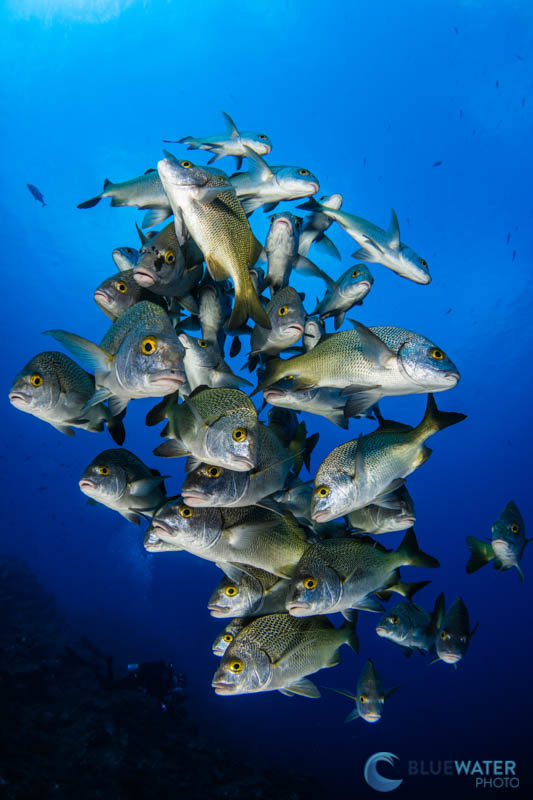
Nikon Z7II and Nikon 8-15mm fisheye lens. f/13,1/160, ISO 500
Who Should Consider Purchasing the Nikon Z6II?
- Wide angle photographers
- Low light, limited visibility, and coldwater photographers
- Underwater video shooters that don't mind a crop factor
- Budget minded photographers who want a great full-frame mirrorless camera
- Photographers who want the best value full frame camera but need more resolution than the Canon EOS R6
- People who want to make use of Nikon's amazing F mount and Z mount lenses
- Nikon DSLR Shooters
- Nikon Z series shooters who want better battery life
Who Should NOT Consider Purchasing the Nikon Z7II/Z6II?
- Original Nikon Z6 and Z7 shooters (unless you're into video)
- People with no brand loyalty to Nikon
- Photographers and videographers looking for the best full frame systems on the market (those would be the Canon EOS R5, Sony A7S III, and Sony A7R IV)
- Anyone with a budget above $2000 for a camera body
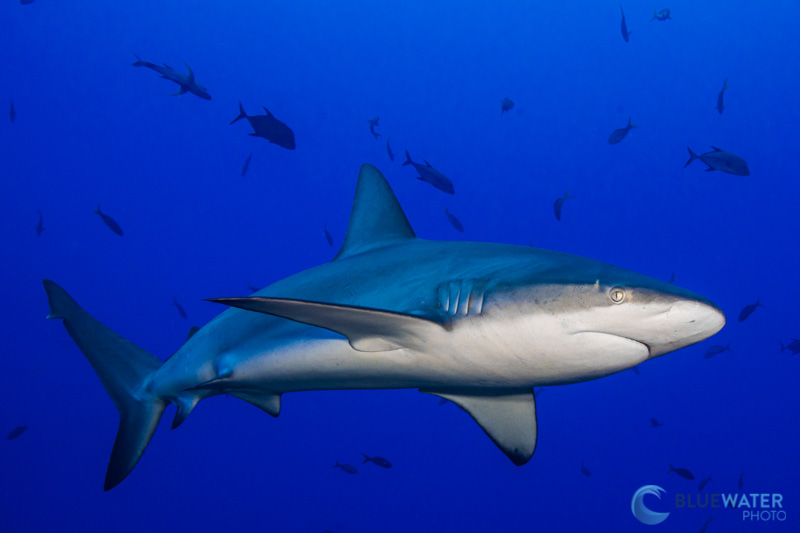
Galapagos Shark photographed with the Nikon Z7II and Nikon Z mount 14-30mm rectilinear wide lens (f/14, 1/200, ISO 400)
Lens Options for Underwater Photography
Because the Z lens mount is so new, there are only a few Z mount lenses that could be viable for both wide angle and macro. Z mount lenses are superior to F mount lenses because the shorter flange distance of the Z mount allows for sharper corners in an image with less diffraction and ghosting. However, when it comes to lens focal lengths available for underwater photography, there are more available F mount lenses with the FTZ adapter - particularly when it comes to fisheye lenses. We are excited to see many more Z mount lenses arrive in the near future.
Macro
- Nikon Z mount 105mm 2.8G VR Macro: Great for small and shy subjects, giving you more working room than the 60mm and essential for super macro. This lens is sharper and faster focusing than the Nikon F mount 105mm macro.
- Nikon F mount 60mm 2.8G Macro w/ FTZ adapter: Great all around lens and especially great for blackwater diving
- Nikon F mount 105mm 2.8G VR Macro w/ FTZ adapter: Great for small and shy subjects, giving you more working room than the 60mm and essential for super macro
- Nauticam Super Macro Converter: the Nauticam super macro converter (SMC-1) is a wet diopter perfect for taking sharp super macro images. In fact, it is the strongest, sharpest diopter on the market. For the best super macro results, use it with the Nikon 105 mm 2.8G VR lens.
Wide Angle Fisheye
- Nikon F mount 8-15mm w/ FTZ adapter: Get creative with the full circular image, or zoom in for a more standard fisheye lens. Read the Nikon 8-15mm FX AF-S f/3.5-4.5E ED Zoom Fisheye Review by Mark B. Hatter.
- Nikon F mount 16mm 2.8 Fisheye w/ FTZ adapter: Also a great lens, and a popular choice for full-frame
Wide Angle Rectilinear
- Nikon Z mount 14-30mm f/4.0: Great for large animals and extremely sharp lens, but requires a larger dome to get sharp images
- Nikon F mount 16-35mm 4.0 w/ FTZ adapter: Great for large animals and extremely sharp lens, but requires a larger dome to get sharp images
- Nikon F mount 20mm 1.8G w/ FTZ adapter: Small, compact, sharp, doesn't need as big a dome as the 16-35 mm
For further reading, check out Bluewater's guide to the best Nikon lenses for underwater.
Underwater Housings for the Nikon Z7II and Z6II
If you're interested in the Nikon Z7II or Z6II for underwater photography then you are in luck! There are already some excellent housings on the market for both cameras from Ikeite, Isotta, and Nauticam. We anticipate there to be additional housings from Aquatica and Sea & Sea in the future. Ikelite makes an excellent polycarbonate housing that is corrosion resistant and lightweight. Nauticam and Isotta both have their own unique anodized aluminum design. Isotta specializes in ergonomics and elegance with a tight fit to the cameras. Nauticam is a great option for those looking to use Nauticam accessories - especially their unique optics.
Isotta Nikon Z6, Z7, Z 6II, Z 7II Underwater Housing
*Ferrari of the Sea, Innovative Design, Durable*
The Isotta Nikon Z6, Z7, Z 6II, Z 7II Underwater Housing is an elegant, artisanally-built, Italian-made anodized aluminum housing. Isotta housings are produced with a signature red finish and curved handles for some of the top underwater housing ergonomics around. This housing fits all four Nikon Z series models including the Z6, Z7, Z6II, and Z7II. In fact, it fits so snuggly that we've been able to shoot with this housing underwater with one-hand! The unique single-handed locking system makes it easy to unlock quickly without the possibility of unlocking the housing underwater. The seal is protected with double o-rings for extra protection. All controls are placed thoughtfully for you to easily reach them and the action of each button is just right.
ORDER NOW!
Nauticam Nikon Z6 II, Z7 II Underwater Housing
*Excellent Ergonomics, User-friendly, Durable*
The Nauticam Nikon Z6 II, Z7 II Underwater Housing is built from aircraft grade aluminum which makes it durable and lightweight. Camera controls are very easy to access with buttons, levers, and knobs all within easy reach. Nauticam housings are designed with a patented port locking system that makes switching out ports very quick and easy. We recommend Nauticam for photographers and videographers that need compatibility with Nauticam's line of unique and top-quality underwater optics. This housing is rated to 100 meters depth.
ORDER NOW!
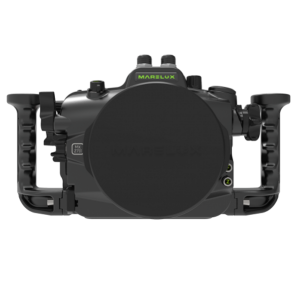
Marelux Nikon Z6, Z7, Z 6II, Z 7II 200DL Underwater Housing
*Ultra Durable & Lightweight*
The Nikon Z7 II & Z6 II Marelux underwater housing is built from high-grade aluminum alloy which provides durability and can withstand even the toughest beatings. Ergonomics are also top-notch, all camera controls are readily available at your fingertips and all buttons are clearly labeled. Thanks to its small size, it is great to travel with. Assembling the housing itself and installing a camera is a breeze with its quick release plate so you can spend more time under the water and less time setting up your gear. With a depth rating of 100m, this housing is an excellent option for both recreational divers as well as technical divers.
ORDER NOW!
Ikelite Nikon Z6, Z7, Z 6II, Z 7II 200DL Underwater Housing
*Affordable, Well-built, Easy to Use*
The Ikelite Nikon Z6, Z7, Z 6II, Z 7II Underwater Housing is built from a high quality, corrosion-free ABS-PC blend polycarbonate, which makes it sturdy but lightweight. In fact the buoyancy from polycarbonate helps quite a bit when it comes to underwater trim. The housing offers full control of the camera with controls that feature a simple design and can be repaired easily in the field. It is a great housing for anyone concerned about budget, but doesn't want to sacrifice quality, reliability, or functionality It's also a must-have option for use with a few Ikelite-specific features such as their accurate Nikon TTL converter for Ikelite strobes and the trim weight system for balancing the buoyancy of large dome ports (perfect for videography).
ORDER NOW!
Aquatica Nikon Z6 II, Z7 II Underwater Housing
*Affordable, Rugged, Compact*
The Aquatica Nikon Z6 II, Z7 II Underwater Housing is a very rugged anodized aluminum housing. It's controls are intelligently designed so that all controls are within a fingers distance from the handle. The housing is equipped with a surveyor monitor system (leak detection). There are two ports available that can be used with an HDMI monitor, vacuum system, or a remote control. The housing is rated to 90m/300 ft.
ORDER NOW!
Sea & Sea Nikon Z6 II, Z7 II Underwater Housing
*Built to last, Compact Size, Elegantly Engineered*
The Sea & Sea Nikon Z6 II, Z7 II Underwater Housing is a high quality housing which is built from machined aluminum. It is durable and can take a beating. It offers great ergonomics and can easily be controlled when wearing gloves. It is built with the option for their useful YS Converter, offering excellent TTL strobe control. These housings also offer full camera control and a wide selection of quality ports. The buttons and knobs are all well labeled and glow in the dark for easy-to-use camera controls during a night dive. This housing offers a unique window at the top, so your camera control panel is visible from the top, ensuring you save camera battery as opposed to using the lcd screen to view your camera settings and changes.
PRE-ORDER NOW!
The Nikon Z7II and Z6II are both excellent, well-rounded cameras for their class. The Nikon Z7II is a high-resolution professional body ideally suited for hardcore underwater macro photographers and video shooters that do not want to compromise with cropped 4K/60p video. The Nikon Z6II is an all-around, budget-friendly body suited for wide angle and low light photographers that want the best video quality possible and don't mind a crop at 4K/60p. Neither camera represents a major upgrade to the original Nikon Z6 and Z7, but they are both capable of taking the same great photos with even better video. For dedicated Nikon shooters who want to use Nikon's impeccable glass underwater, the Z7II and Z6II are the best options on the market. For underwater creatives looking for the best-of-the-best in full frame cameras, they might find themselves in the Canon or Sony camp....until the playing field changes in the next few years or even months. And although we would have hoped to see more of an improvement in the autofocus system, we had no problem capturing some amazing photos and video of manta rays, sharks, and more in the wild waters of the open Pacific Ocean.
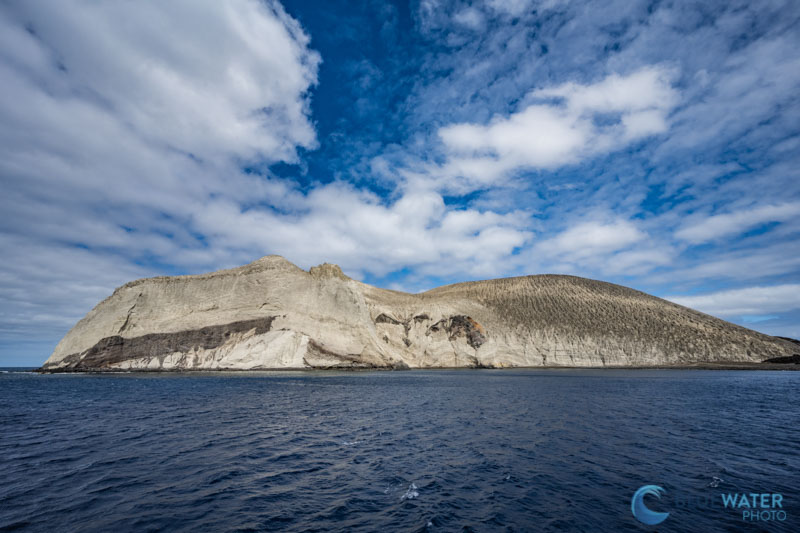
Topside photo with the Nikon Z7II and Nikon Z mount 14-30mm rectilinear wide lens
Purchase a Nikon Z7II/Z6II underwater housing at Bluewater Photo:
Nauticam Nikon Z7II, Z6II Underwater Housing
Ikelite Nikon Z 7II, Z 6II, Z7, Z6 Underwater Housing
Sea & Sea Nikon Z7II, Z6II Underwater Housing
Aquatica Nikon Z7II, Z6II Underwater Housing
Isotta Nikon Z7II, Z6II, Z7, Z6 Underwater Housing
Marelux Nikon Z7 II & Z6 II Underwater Housing
Need help choosing a housing? Check out the Nikon Z7II and Z6II Underwater Housing Buyer's Guide
Learn more here:
https://www.bluewaterphotostore.com/
Contact our sales department:
Phone: 310-633-5052
Email: sales@bluewaterphotostore.com
RECOMMENDED ARTICLES
SUPPORT THE UNDERWATER PHOTOGRAPHY GUIDE:
The Best Service & Prices on u/w Photo Gear
 Visit Bluewater Photo & Video for all your underwater photography and video gear. Click, or call the team at (310) 633-5052 for expert advice!
Visit Bluewater Photo & Video for all your underwater photography and video gear. Click, or call the team at (310) 633-5052 for expert advice!
The Best Pricing, Service & Expert Advice to Book your Dive Trips
 Bluewater Travel is your full-service scuba travel agency. Let our expert advisers plan and book your next dive vacation. Run by divers, for divers.
Bluewater Travel is your full-service scuba travel agency. Let our expert advisers plan and book your next dive vacation. Run by divers, for divers.




